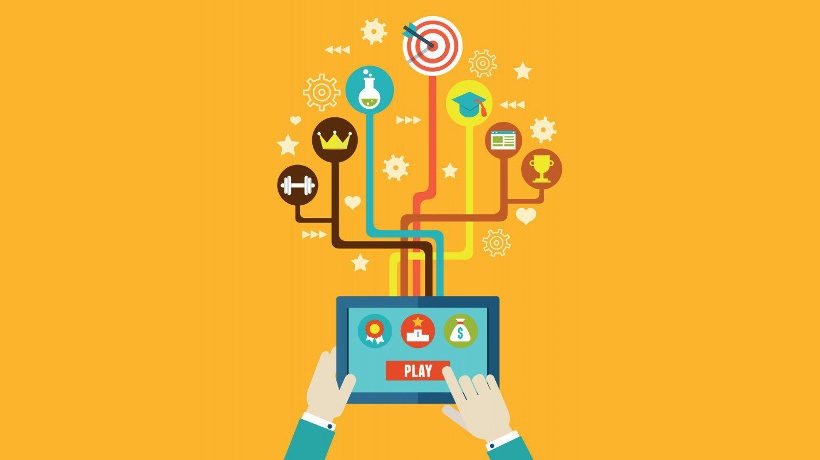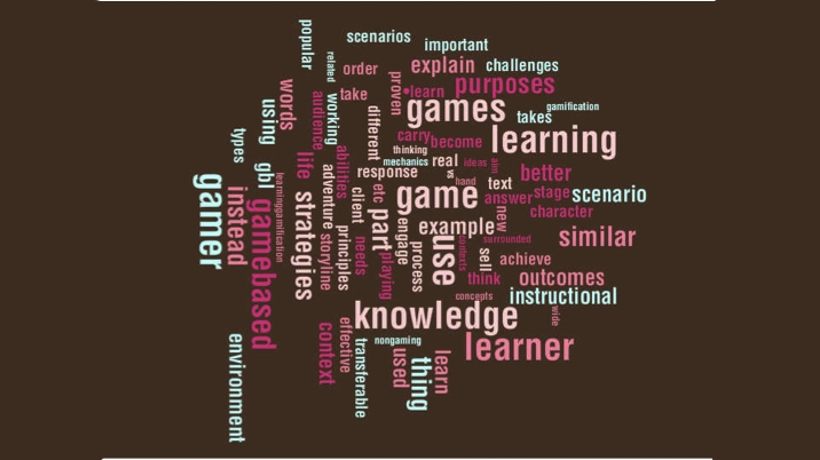Ringing The Death Bells Of Boring Training With Game-Based Online Learning
Jim is the training manager of a large pharmaceutical company. Recently, his company developed a course on the documentation norms, prescribed by the FDA. The company invested considerable time and money in developing the course and expected it to be a huge success. However, the course turned out to be a failure and many learners complained that it was very boring.
Jim is not the first person to have faced such a situation. Many in the Learning and Development fraternity face a similar problem. What can L&D managers do to ensure courses are well-received and have higher completion rates? How can we make courses less monotonous and more engaging? One of the ways to “inject life” into web-based training is to develop game-based online learning courses.
What Is Game-Based Learning?
Game-based learning is an Instructional Design approach, which facilitates the exploration of game aspects in a learning context. The game is an integral part of the learning process. Consider the following example.
A pharmaceutical company has developed a web-based crossword puzzle for training its new employees on medical terminology. The learners acquire knowledge of the terminology, trying to solve the crossword puzzle.
Here, the objective of the training program is to make learners familiar with the medical terminology and the crossword game is an instrument of learning. The game element in the online learning module i.e. the crossword puzzle ensures that learners do not feel the “heat” of learning and remain actively engaged in the learning process.
Over the last few years, the number of companies adopting game-based learning strategies is increasing considerably, and this trend shows no signs of slowing down. A report published by Ambient Insight reveals that the market for game-based learning solutions is likely to register a very healthy compound annual growth rate of 22.4% between 2016 and 2021 [1].
Having seen what game-based learning is and that the demand for game-based learning solutions is rising at a feverish pace, let us proceed to examine the differences between game-based learning and a related concept – gamification.
How Is It Different From Gamification?
Karl Kapp, an instructional design guru and a world-renowned expert on gamification defines the term gamification as using game-based mechanics, aesthetics, and game thinking to engage people, motivate action, promote learning, and solve problems.
From this comprehensive definition, it is clear that gamification is an instructional approach that uses game mechanics such as leaderboards, competition, and rules to facilitate effective learning.
Game-based learning and gamification fundamentally differ on the following aspect. Game play is integral to game-based learning, while it is not so in the case of gamification. In game-based learning, the learner acquires the knowledge and skills by playing the game. In the example of the crossword puzzle described above, the learners of the pharmaceutical company learn about the medical terms by playing the crossword puzzle. There is no learning without the puzzle.
On the other hand, in gamification, game play is not the key to acquisition of knowledge and skills. Rather, game play is used to drive motivation levels and make the training engaging. Consider the following example.
A legal firm uses gamified courses to drive motivation levels among its employees, who are fresh out of law schools. The company conducts a quiz, where learners are given a description of a legal term and are asked to identify what the term is. The correct answers are arranged in the form of a crossword, and the learner who” fills” the crossword in the shortest timeframe is declared the winner and presented a check of 2000 USD.
In the above example, the gamified courses do not use games to help learners master legal terminology. However, they use elements of games to generate interest in the course and master its contents.
What Are The Training Interventions In Which Game-Based Learning Can Be Used?
Kapp, in his best-selling book The Gamification of Learning and Instruction– Fieldbook states that game-based learning is very useful to:
- Impart psychomotor skills, where a learner needs to perform coordinated activities involving his hands, arms, fingers, and feet. A good example of psychomotor skills is repairing a vehicle.
- Create an impact on learners’ values and attitudes.
- Evaluate learners’ knowledge of facts, concepts, and terminology.
- Train learners to execute a procedure. For instance, you can use game-based learning to teach the steps involved in creating a purchase order.
- Teach how to put elements together to form a coherent or functional whole or reorganize elements into a new pattern or sequence. For instance, you can train learners, using game-based learning, to develop a quicker procedure to create a purchase order.
- Explain how the different parts of a system are related to each other. For example, you can use game-based learning to show how the different parts of the human digestive system are related to each other.
Game-based learning goes a long way in imparting effective training in a fun-filled, stress-free, and engaging manner. It is indeed the ideal weapon in your fight against boring training.
References
- Key Findings from Ambient Insight’s “The 2016-2021 Global Game-based Learning Market” Report










